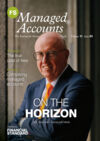Private credit market updateBY PATRICK SUCHY, DAVE LOWERY | VOLUME 15, ISSUE 4This increased interest is not limited to investors. Private credit has generated significant headlines in the global press in recent months. Journalists have commented on the growth the asset class has experienced, as well as risks. Some central banks have also flagged the asset class as of increased importance, given the strong growth in assets under management (AUM). This means private credit markets could come under increased scrutiny in future. Regardless of the future path towards increased scrutiny, and potentially regulation, the core long-term drivers of activity are both powerful and long-term. For investors, we believe the underlying investments' exposure to floating rates at a time when interest rates have risen at their fastest pace in decades is key to their relative attractiveness. This rising interest is combined with a focus on credit quality and underwriting, is increasingly at the forefront of investors' minds when undertaking due diligence on potential managers. Some investors believe that the industry has not experienced a significant test since it was spurred into growth following the global financial crisis (GFC) as illustrated by Figure 1 on the next page. In our view, this may be true in some respects, but managers are likely to have been robust in their own underwriting. With increased allocations and rising rates providing a boost to performance, it is unsurprising that the private credit market is now far bigger than it was at the time of the GFC. Get articles like this delivered to your email - Sign up for the free weekly newsletter More Articles |
Latest News
Mercer SmartPath returns exceed 12%
|Future Group reveals super fund returns, fee changes
|AustralianSuper's MySuper option returns 9.5%
Cbus, Rest deliver 'strong' returns amid heightened volatility
Cover Story

Climbing to the top
MANAGING DIRECTOR
VANGUARD INVESTMENTS AUSTRALIA LTD




 Read full article
Read full article


















